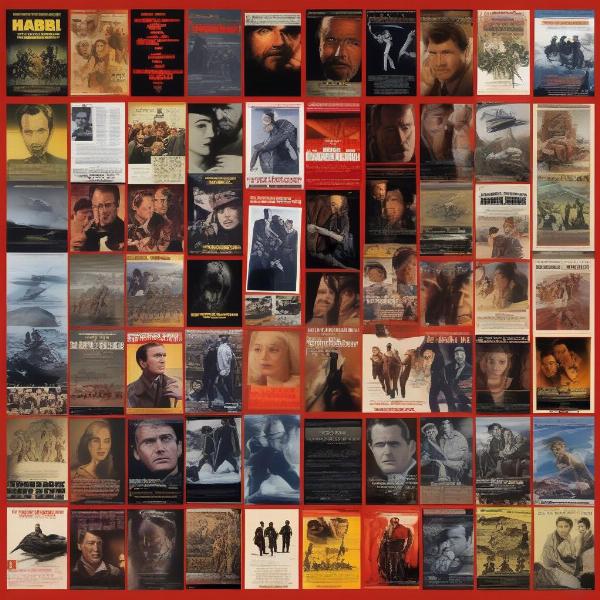Richard Connell’s thrilling short story, “The Most Dangerous Game,” first captivated readers upon its publication in Collier’s magazine on January 19, 1924. This gripping tale of survival and hunter-versus-hunted has since become a classic, inspiring countless adaptations across film, television, and other media. But its enduring popularity isn’t just a matter of chance. “The Most Dangerous Game” tapped into primal fears and explored complex themes that continue to resonate with audiences today.
Similar to the anxieties explored in “The Most Dangerous Game,” the human condition’s fascination with survival against the odds has been a recurring theme across literature and entertainment. The story’s 1924 publication placed it squarely within the burgeoning era of pulp fiction, a period known for its sensational stories and exploration of darker themes. “The Most Dangerous Game” distinguished itself, however, by blending thrilling action with philosophical questions about the nature of humanity, predator versus prey, and the justification of hunting for sport.
The Roaring Twenties and the Birth of a Hunting Thriller
The 1920s, often referred to as the Roaring Twenties, was a period of significant social and cultural change. The post-World War I era saw a rise in disillusionment and a fascination with the darker aspects of human nature. This backdrop provided fertile ground for stories like “The Most Dangerous Game” to flourish. Connell’s tale captured the anxieties of the time, reflecting a society grappling with shifting morals and the search for new thrills.
The story’s initial publication in Collier’s, a popular weekly magazine, ensured a wide readership. This publication propelled “The Most Dangerous Game” into the public consciousness, solidifying its place as a notable work of fiction. The story’s immediate success is a testament to its compelling narrative and exploration of timeless themes.
 The Most Dangerous Game published in Collier's magazine 1924
The Most Dangerous Game published in Collier's magazine 1924
Why 1924 Matters: Contextualizing “The Most Dangerous Game”
Understanding the context of 1924 helps illuminate the story’s significance. The world was still recovering from the Great War, and the concept of hunting, both literally and metaphorically, resonated deeply. The story’s exploration of the hunter becoming the hunted touched on a primal fear, adding to its psychological depth. Furthermore, the burgeoning popularity of big-game hunting as a sport among the wealthy elite provided a social commentary backdrop for Connell’s narrative.
The themes of survival and the blurring lines between hunter and prey were particularly relevant in a world grappling with the aftermath of war. Connell’s story offered a thrilling escape while also prompting readers to question the ethics of hunting and the nature of humanity. The popularity of “The Most Dangerous Game” can also be attributed to its suspenseful pacing and vivid imagery.
Unpacking the Story’s Enduring Legacy: From 1924 to Today
From its 1924 debut to its present-day interpretations, “The Most Dangerous Game” has remained remarkably relevant. The story’s adaptability is evident in the numerous film and television adaptations, each offering a unique take on Connell’s original work. The core themes of survival, the thrill of the chase, and the examination of human nature continue to resonate with audiences, ensuring the story’s enduring legacy.
 Film and television adaptations of The Most Dangerous Game
Film and television adaptations of The Most Dangerous Game
Want to explore the various adaptations of this thrilling tale? Check out our guide on where to watch most dangerous game. The story’s themes have also been echoed in countless other works, demonstrating its lasting impact on popular culture. The simplicity of its premise combined with its complex exploration of human psychology ensures its continued relevance.
The Most Dangerous Game’s Influence on Popular Culture
“The Most Dangerous Game” has had a profound influence on popular culture, shaping the thriller genre and inspiring countless works of fiction. The concept of humans hunting humans for sport has become a recurring trope, often used to explore the darkest corners of human nature. Connell’s story established a framework for this type of narrative, paving the way for future explorations of similar themes.
From its publication in 1924 onward, the story’s influence can be seen in literature, film, television, and even video games. Its impact is a testament to the power of its central premise and the enduring questions it raises about humanity. The story’s exploration of the hunter-versus-hunted dynamic has become a staple of the thriller genre.
Exploring the Themes of “The Most Dangerous Game”
Beyond its thrilling plot, “The Most Dangerous Game” delves into deeper themes that resonate with readers even today. The story explores the nature of humanity, questioning what separates humans from animals. It examines the ethics of hunting, particularly the concept of hunting for sport. The blurring lines between hunter and hunted further complicates the narrative, forcing both the characters and the readers to confront uncomfortable truths about human behavior.
The story’s examination of these themes contributes to its enduring popularity. By raising complex questions about morality and human nature, Connell’s story continues to provoke thought and discussion. The tension between civilized behavior and primal instincts is central to the narrative.
Conclusion
“The Most Dangerous Game,” published in 1924, has secured its place as a literary classic. Its exploration of the hunt, survival, and the complexities of human nature continues to resonate with audiences across generations. From its initial publication in Collier’s magazine to its numerous adaptations, the story’s impact on popular culture is undeniable. “The Most Dangerous Game” remains a powerful and thought-provoking tale, prompting us to question our own place in the world and the boundaries of our humanity.
FAQ
-
What is “The Most Dangerous Game” about? It’s a short story about a big-game hunter who becomes the prey of a Cossack general who hunts humans for sport.
-
Who wrote “The Most Dangerous Game”? Richard Connell authored the story.
-
When was it first published? January 19, 1924, in Collier’s magazine.
-
Why is it considered a classic? Its thrilling plot, exploration of human nature, and influence on the thriller genre have cemented its status.
-
Are there any movie adaptations? Yes, numerous film and television adaptations exist, spanning decades.
-
What are the main themes of the story? Survival, the ethics of hunting, the blurring line between hunter and hunted, and the nature of humanity.
-
Where can I read “The Most Dangerous Game”? It’s readily available in various anthologies, online libraries, and bookstores.

